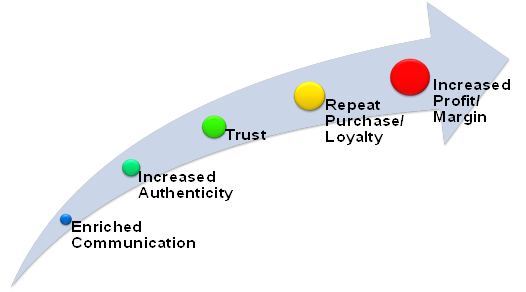The Brand Action Model™ is a sociological construct that provides a unique perspective on consumer relationships with brands. It is based on elements of the best of the Sociological Community Models. By providing an understanding the social dimensions of branding, the Brand Action Model enables us to manage the impact of environmental influences and leverage them to build a brand community, complete with supportive institutions and brand partners.
For the advertising industry, this is a new model for business success. The business benefits in taking this approach include
- Building and maintaining enhanced client loyalty even in price sensitive markets
- Creating stronger, more differentiated brand positioning
- Developing a stronger base upon which to build brand extensions
What’s Being Done vs. What Should Be Done
| What’s Being Done | What Should Be Done |
|---|---|
| Focusing on end user/consumer | Converting the social system of value chain intermediaries AND consumers to belief in the brand |
| Generating brand awareness and motivating behaviors of individuals | Building brand allegiance through end user/consumer influencers and institutions |
| Communications creativity | Integrated communications strategy |
| Purchasing | Evangelizing value chain members |
| Focus groups, surveys | Addition of history, ethnography, cultural anthropology, participant observation, semiotics |
| Primary offering: advertising | Primary offerings: IBP (Integrated Brand Promotion) strategy and implementation |
The Brand Action Model in Action
Every brand is part of a complex value chain. The key influencers in that chain are the people, social institutions, and business organizations that mediate between the client and the end user, as well as the cultural context of values and meanings in which the client and end user operate.
When consumers see a brand valued by consumers or influencers they care about, institutions they respect, and organizations they rely on to bring them products that fulfill their expectations, they value the brand all the more. When retailers or other intermediaries see the brand valued by consumers, they value it more. All parties exist in a social system in which they value each other more when they share common cultural perceptions.
This is something industries such as beauty and fashion are already learning. A decline in returns provided by traditional marketing channels, combined with the excitement surrounding influencer marketing, has to led to brands competing for influencers’ attention. Which influencers are considered the best is often determined by follower count or a “coolness factor,” rather than meaningful analytics; but it may be time to revisit the way brands look at influencers. While influencers have demonstrated that they be extremely valuable, brands need to differentiate between fame and actual influence. Influencers aren’t celebrities; they are actually a commodity.
When a brand’s cultural meanings are embedded into consumer and intermediary cultures, then you have created a brand community. That community can be mobilized to amplify, protect, and extend a brand’s meanings to current and new constituents. We do that by creating and using the tools below to develop unique insights about the brand’s consumers, intermediaries, and cultural context:
- African-American consumer panels
- Culturally defined anthropological databases
- Customer sociological segmentation that goes beyond traditional demographics and psychographics
- Particular research tailored to identify the cultural significance of a brand's equity





